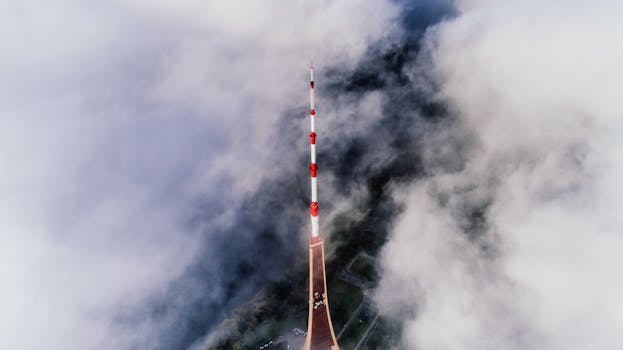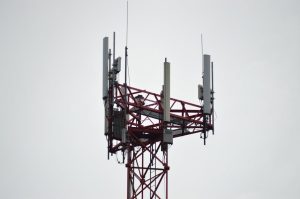GEO Satellites: Understanding the Role of Geostationary Earth Orbit Satellites in Modern Telecommunications

GEO satellites, or Geostationary Earth Orbit satellites, are a type of satellite that orbits the Earth at an altitude of approximately 36,000 kilometers above the equator. GEO satellites are designed to remain stationary in relation to a fixed point on the Earth’s surface, allowing them to provide continuous coverage of a specific region. This unique characteristic makes GEO satellites ideal for a variety of applications, including television broadcasting, telecommunications, and weather forecasting.
The history of GEO satellites dates back to the 1960s, when the first geostationary satellite, Syncom 2, was launched by NASA. Since then, the technology has evolved significantly, with thousands of GEO satellites launched into orbit. Today, GEO satellites play a vital role in modern telecommunications, providing a wide range of services to millions of people around the world.
One of the primary advantages of GEO satellites is their ability to provide continuous coverage of a specific region. This makes them ideal for applications such as television broadcasting, where a signal needs to be transmitted to a wide audience over a large area. GEO satellites are also used for telecommunications, providing connectivity to remote or underserved areas where traditional infrastructure is lacking. Additionally, GEO satellites are used for weather forecasting, allowing meteorologists to monitor weather patterns and predict storms and other severe weather events.
In addition to their practical applications, GEO satellites have also played a significant role in the development of modern telecommunications. The first GEO satellite, Syncom 2, was used to transmit the first transatlantic television signal, marking the beginning of a new era in global communications. Today, GEO satellites continue to push the boundaries of what is possible in telecommunications, with advances in technology enabling faster and more reliable connections.
Despite the many advantages of GEO satellites, there are also some challenges associated with their use. One of the primary concerns is the risk of collision with other satellites or space debris. As the number of satellites in orbit increases, so does the risk of collisions, which can have serious consequences for the entire satellite industry. Additionally, GEO satellites are susceptible to interference from other satellites or terrestrial sources, which can disrupt their signals and affect their performance.
In recent years, there has been a growing trend towards the use of non-geostationary satellites, such as those in low Earth orbit (LEO) or medium Earth orbit (MEO). These satellites offer several advantages over traditional GEO satellites, including lower latency and higher bandwidth. However, they also have some limitations, such as the need for complex tracking and handover systems to maintain connectivity.
In conclusion, GEO satellites play a vital role in modern telecommunications, providing a wide range of services to millions of people around the world. Their unique characteristics, including their ability to remain stationary in relation to a fixed point on the Earth’s surface, make them ideal for applications such as television broadcasting, telecommunications, and weather forecasting. While there are some challenges associated with their use, the benefits of GEO satellites make them an essential part of our global telecommunications infrastructure.
The future of GEO satellites is likely to be shaped by advances in technology and changes in the satellite industry. As the demand for satellite services continues to grow, we can expect to see the development of new and innovative applications for GEO satellites. Whether it’s providing connectivity to remote or underserved areas, or enabling the transmission of high-definition video content, GEO satellites will continue to play a vital role in shaping the future of telecommunications.
Applications of GEO Satellites
GEO satellites have a wide range of applications, including television broadcasting, telecommunications, and weather forecasting. They are also used for navigation, remote sensing, and scientific research. In addition, GEO satellites are used for military communications, providing secure and reliable connectivity for military personnel and operations.
One of the most significant applications of GEO satellites is in the field of telecommunications. They provide connectivity to remote or underserved areas, where traditional infrastructure is lacking. This has enabled millions of people around the world to access the internet, make phone calls, and send text messages. GEO satellites have also enabled the transmission of high-definition video content, allowing people to access a wide range of entertainment and educational programming.
GEO satellites are also used for weather forecasting, providing meteorologists with critical data on weather patterns and storms. This information is used to predict weather events, such as hurricanes, tornadoes, and blizzards, and to provide early warnings to people in affected areas. In addition, GEO satellites are used for remote sensing, providing data on environmental conditions, such as ocean currents, sea level rise, and deforestation.
Challenges and Limitations of GEO Satellites
Despite the many advantages of GEO satellites, there are also some challenges and limitations associated with their use. One of the primary concerns is the risk of collision with other satellites or space debris. As the number of satellites in orbit increases, so does the risk of collisions, which can have serious consequences for the entire satellite industry.
Another challenge facing GEO satellites is the issue of interference. GEO satellites are susceptible to interference from other satellites or terrestrial sources, which can disrupt their signals and affect their performance. This can be particularly problematic for applications such as telecommunications, where reliable and secure connectivity is critical.
In addition to these challenges, GEO satellites are also subject to the limitations of their technology. They have a relatively narrow beamwidth, which can limit their ability to provide coverage to large areas. They also have a relatively high latency, which can affect their performance in applications such as real-time communications.
Future of GEO Satellites
The future of GEO satellites is likely to be shaped by advances in technology and changes in the satellite industry. As the demand for satellite services continues to grow, we can expect to see the development of new and innovative applications for GEO satellites. Whether it’s providing connectivity to remote or underserved areas, or enabling the transmission of high-definition video content, GEO satellites will continue to play a vital role in shaping the future of telecommunications.
One of the most significant trends in the satellite industry is the move towards the use of non-geostationary satellites, such as those in LEO or MEO. These satellites offer several advantages over traditional GEO satellites, including lower latency and higher bandwidth. However, they also have some limitations, such as the need for complex tracking and handover systems to maintain connectivity.
In conclusion, GEO satellites play a vital role in modern telecommunications, providing a wide range of services to millions of people around the world. While there are some challenges and limitations associated with their use, the benefits of GEO satellites make them an essential part of our global telecommunications infrastructure. As the satellite industry continues to evolve, we can expect to see new and innovative applications for GEO satellites, and a continued expansion of their role in shaping the future of telecommunications.




